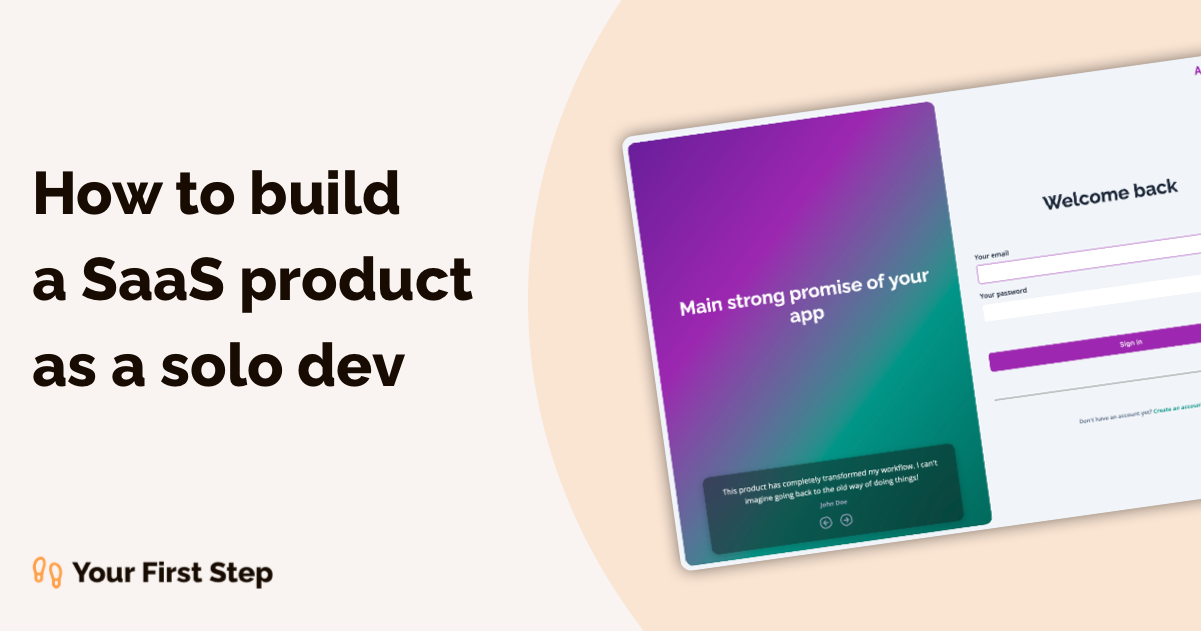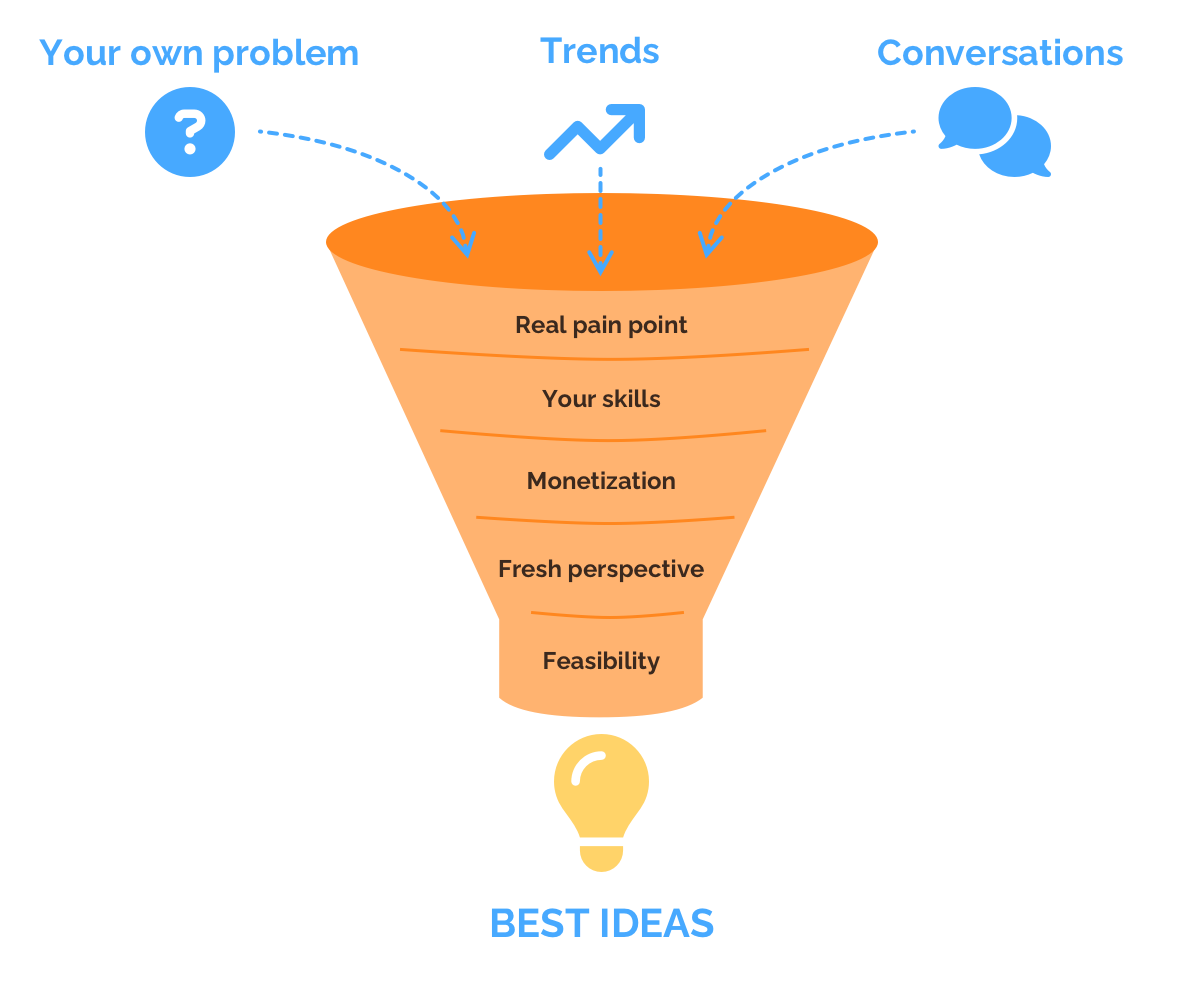Published on 4/14/2025

If you can write code, you already have one of the most important skills needed to launch a SaaS product — but it’s only about 30% of the journey.
The technical barriers to launching software have never been lower. Hosting, payments, authentication, UI kits — it’s all faster and easier than ever, especially with AI.
What separates a successful SaaS from just another side project? The right process.
In this guide, we’ll walk through how to go from idea → MVP → paying customers — all as a solo developer.
As a solo developer, you won’t be able to ship a really innovative or groundbreaking project. Let’s break down how to find a good solo SaaS idea.
Here’s a few ways to find ideas :
The best opportunities often lie close to home.
What’s a good idea?
Aim for something you can realistically build in a few weeks and maintain on your own.

Don’t fall into the “build trap.” Coding is easy. Finding a real problem to solve is the hard part.
Ask Yourself:
Before you write your first line of code, reach out to your target audience to validate your hypothesis.
Make sure:
I know you’re eager to build, but taking a few days to perform interviews to refine your idea and challenge your solution can save you months of work.
It’s also an opportunity to learn which arguments resonate with your audience to prepare for your sales calls and marketing strategy.
An MVP is the first version of your product that’s enough to actually be sold.
Forget the polished dashboard, animations, and dark mode. Your goal is to validate one thing:
Does this solve a painful problem, and will someone pay for it?
Your MVP should include:
How to build the MVP?
Forget about the trendiest stack and complicated infrastructure. You need:
My stack :
Save weeks of setup:
Your First Step’s boilerplate includes authentication, billing, transactional email, and more — ready to go.
Your first 10 users won’t come from SEO or ads. They’ll come from DMs, forums, tweets, and conversations.
Try this:
When one person says “I’d pay for this” — lean in.
It’s also time to recontact every person who showed interest when you were validating your idea. Use the insights you gathered then to help you find new leads to reach out to.
Remember: At the beginning, do things that don’t scale
You’ve got a product and early users, it’s time to double down on what works and lay the ground for your future scale.
From here, focus on:
On the business side:
Monitor the outcomes to identify what works and what doesn’t. Don’t try to automate things too soon.
Do the process manually a 100 times until you know exactly what works and why, that’s when you can build automation.
If you want to skip months of trial and error, Your First Step gives you:
All for a one-time payment — no monthly subscription.
👉 Grab Your First Step now: $249 Lifetime Access
Solo developers are uniquely positioned to build lean, profitable SaaS products. But validation, sales, and focus are everything.
Don’t try to build a “startup.” Solve a problem. Charge money. Talk to users. Keep going.
And if you want a proven roadmap + the tools to launch faster?
Your first step… is Your First Step.